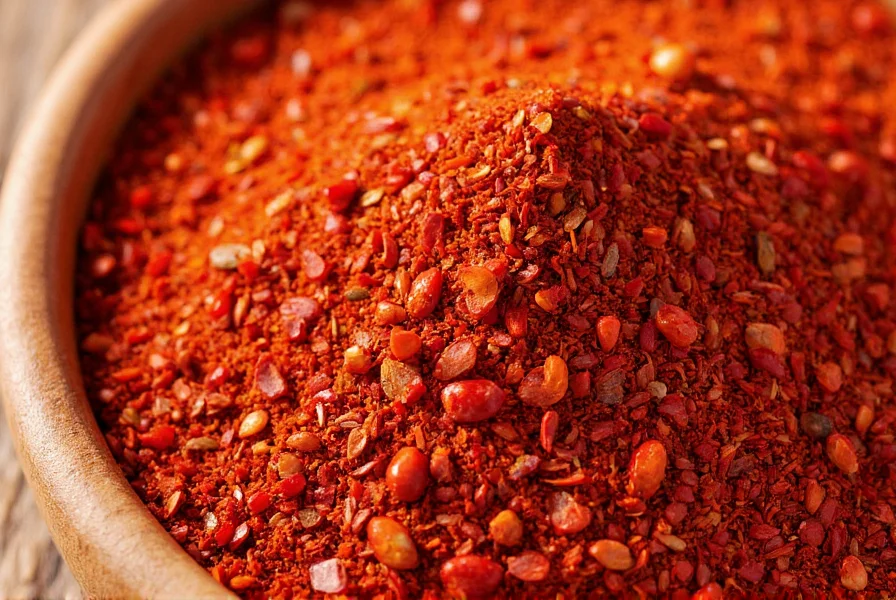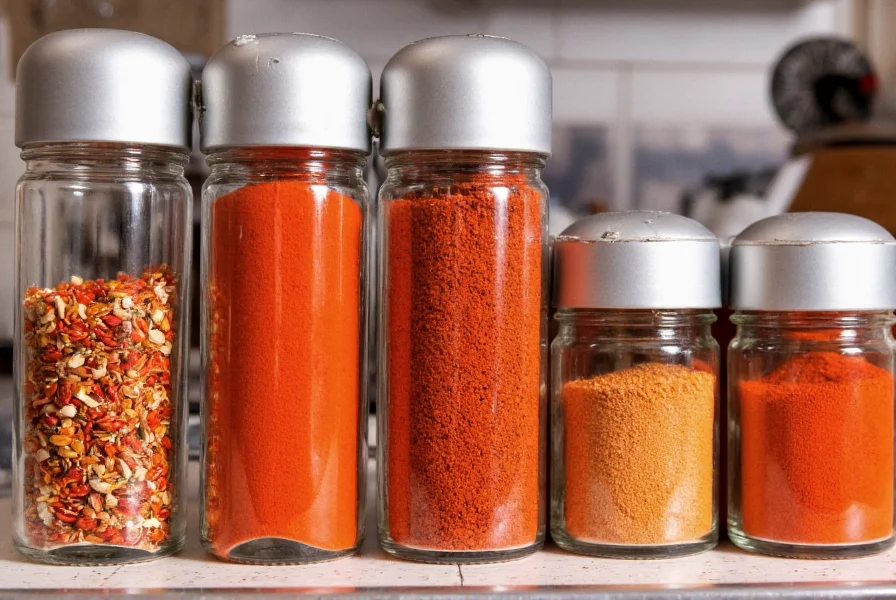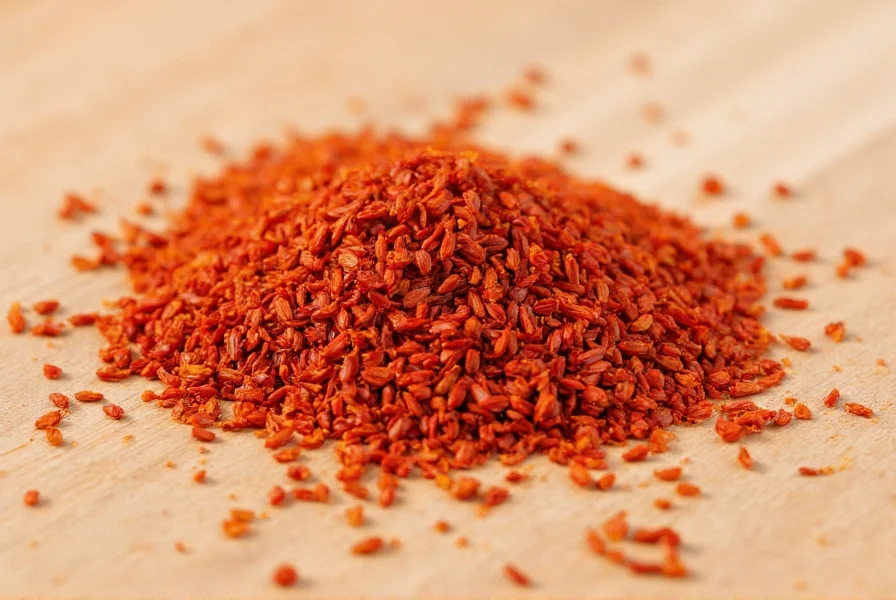What Exactly Are Red Pepper Flakes?
Red pepper flakes, also known as crushed red pepper, consist of dried and crushed varieties of Capsicum annuum peppers. While many people assume they're made exclusively from cayenne peppers, commercial blends often include multiple pepper varieties like serrano, jalapeño, and bell peppers. This combination creates a balanced heat profile with varying degrees of spiciness and flavor complexity.
The production process involves harvesting ripe red peppers, drying them thoroughly (either sun-dried or using dehydrators), then crushing them into small flakes. Quality red pepper flakes maintain their vibrant red color and retain essential oils that contribute to both flavor and aroma. Unlike ground chili powders, the flake form allows for better control over heat intensity since you can see and adjust the amount of seeds (which contain most of the capsaicin) in your dish.

Flavor Profile and Heat Level Explained
Understanding the flavor characteristics of red pepper flakes helps home cooks use them effectively. Unlike single-variety chili powders, red pepper flakes offer a nuanced taste experience:
- Heat level: Typically ranges from 15,000 to 50,000 Scoville units, depending on the pepper blend
- Flavor notes: Earthy, slightly sweet, with subtle smokiness and fruitiness
- Mouthfeel: Provides both immediate heat and lingering warmth
- Aroma: Intensely fragrant when heated, releasing complex volatile compounds
| Spice Comparison | Heat Level (Scoville) | Flavor Profile | Best Uses |
|---|---|---|---|
| Red Pepper Flakes | 30,000-50,000 | Complex, earthy, slightly sweet | Finishing dishes, pizza, pasta, marinades |
| Cayenne Pepper | 30,000-50,000 | Sharp, one-dimensional heat | Cooking, sauces, spice blends |
| Chili Powder | 1,000-2,500 | Smoky, earthy, mild heat | Chili, stews, rubs |
| Crushed Aleppo Pepper | 10,000-15,000 | Fruity, moderate heat, citrus notes | Mediterranean dishes, finishing |
Culinary Applications and Best Practices
Professional chefs and home cooks utilize red pepper flakes in various ways to maximize their flavor potential. The key to effective use lies in understanding when and how to incorporate them into different cooking processes.
For immediate heat and visual appeal, add red pepper flakes during the final minutes of cooking or as a garnish. This technique preserves their vibrant color and delivers a pronounced spicy kick. Italian cooks traditionally sprinkle them over pizza after baking or into olive oil before adding pasta.
For infused flavor without intense heat, bloom the flakes in oil at the beginning of cooking. Heating them in olive oil or butter for 1-2 minutes releases their essential oils and distributes the heat more evenly throughout the dish. This method works exceptionally well for tomato sauces, soups, and braises.
When making marinades or rubs, combine red pepper flakes with complementary spices like garlic powder, oregano, and black pepper. The flakes' texture helps them adhere to meats and vegetables while providing controlled heat distribution.
Storage Methods for Maximum Freshness
Proper storage significantly extends the shelf life and maintains the flavor integrity of red pepper flakes. Exposure to light, heat, and moisture causes rapid degradation of capsaicin and essential oils.
Store your red pepper flakes in an airtight container away from direct sunlight and heat sources. A dark pantry or cupboard works well for short-term storage (up to 6 months). For longer preservation (up to 18 months), keep them in the refrigerator or freezer in a moisture-proof container. Avoid storing near the stove or oven where temperature fluctuations occur.
Check freshness by examining color and aroma. Fresh flakes maintain a vibrant red hue and strong, pleasant fragrance. Dull color and diminished aroma indicate degradation. Never store red pepper flakes in humid environments, as moisture causes clumping and potential mold growth.
Effective Substitutes When You've Run Out
When you need red pepper flakes substitutes for your recipe, several alternatives work depending on your specific needs. Understanding these options helps maintain your dish's intended flavor profile.
For similar heat and texture, crushed Aleppo pepper provides a comparable flake size with slightly less heat and more fruitiness. If using cayenne pepper as a substitute, use only one-third the amount since it delivers more concentrated heat without the textural element.
When seeking milder alternatives, paprika combined with a pinch of cayenne offers adjustable heat levels. For recipes where texture matters less than flavor, chili powder works well but requires adjustment (use 1.5 times the amount of red pepper flakes called for).
Homemade alternatives provide the freshest flavor. Dry and crush your own jalapeño or serrano peppers, ensuring thorough dehydration to prevent spoilage. This method lets you control the heat level by adjusting seed content.

Nutritional Benefits Worth Noting
Beyond their culinary value, red pepper flakes offer several health benefits supported by nutritional science. Capsaicin, the compound responsible for their heat, has been studied for various potential health effects.
Research suggests capsaicin may boost metabolism slightly and suppress appetite, potentially aiding weight management efforts. The compound also demonstrates anti-inflammatory properties that may benefit cardiovascular health. Additionally, red peppers are rich in vitamin C, vitamin A, and various antioxidants that support immune function.
When incorporating red pepper flakes into your diet, remember that moderation is key. While they offer health benefits, excessive consumption can cause digestive discomfort for sensitive individuals. Start with small amounts and gradually increase as your tolerance develops.
Signature Dishes Featuring Red Pepper Flakes
Certain culinary traditions have perfected the use of red pepper flakes, creating iconic dishes where they play a starring role. Understanding these applications helps home cooks replicate professional results.
In Italian cuisine, "Arrabbiata" sauce (meaning "angry" sauce) relies on red pepper flakes for its characteristic heat. The traditional preparation involves blooming the flakes in olive oil before adding tomatoes, creating a harmonious balance of acidity, sweetness, and spice.
American Southern cooking features red pepper flakes in hot honey preparations, where the spice cuts through sweetness to create a complex flavor profile perfect for chicken dishes. The combination has gained popularity in recent years for its versatility.
Mediterranean dishes often use red pepper flakes in olive oil infusions served with bread, or sprinkled over roasted vegetables and grilled meats. The flakes enhance natural flavors without overwhelming the dish's primary ingredients.
Frequently Asked Questions
What's the difference between red pepper flakes and cayenne pepper?
Red pepper flakes contain a mixture of dried pepper pieces including seeds and membranes from various chili varieties, while cayenne pepper is a uniformly ground powder made from specific cayenne peppers. Red pepper flakes offer more textural variation and complex flavor, while cayenne provides consistent, concentrated heat.
How much cayenne equals one teaspoon of red pepper flakes?
Generally, use one-third teaspoon of cayenne pepper to replace one teaspoon of red pepper flakes. Cayenne is more concentrated, so this ratio maintains similar heat levels while accounting for the textural difference between the two forms.
Do red pepper flakes go bad?
Red pepper flakes don't technically spoil but lose potency over time. Properly stored in an airtight container away from light and moisture, they maintain good flavor for 6-12 months. Signs of degradation include faded color, diminished aroma, and clumping. For longest freshness, store in the refrigerator or freezer.
Can I make my own red pepper flakes at home?
Yes, you can make homemade red pepper flakes by drying ripe red chili peppers (like cayenne, serrano, or jalapeño) completely, then crushing them. Ensure thorough drying to prevent mold, and remove seeds if you prefer milder heat. Homemade versions often have brighter flavor but shorter shelf life than commercial products.











 浙公网安备
33010002000092号
浙公网安备
33010002000092号 浙B2-20120091-4
浙B2-20120091-4